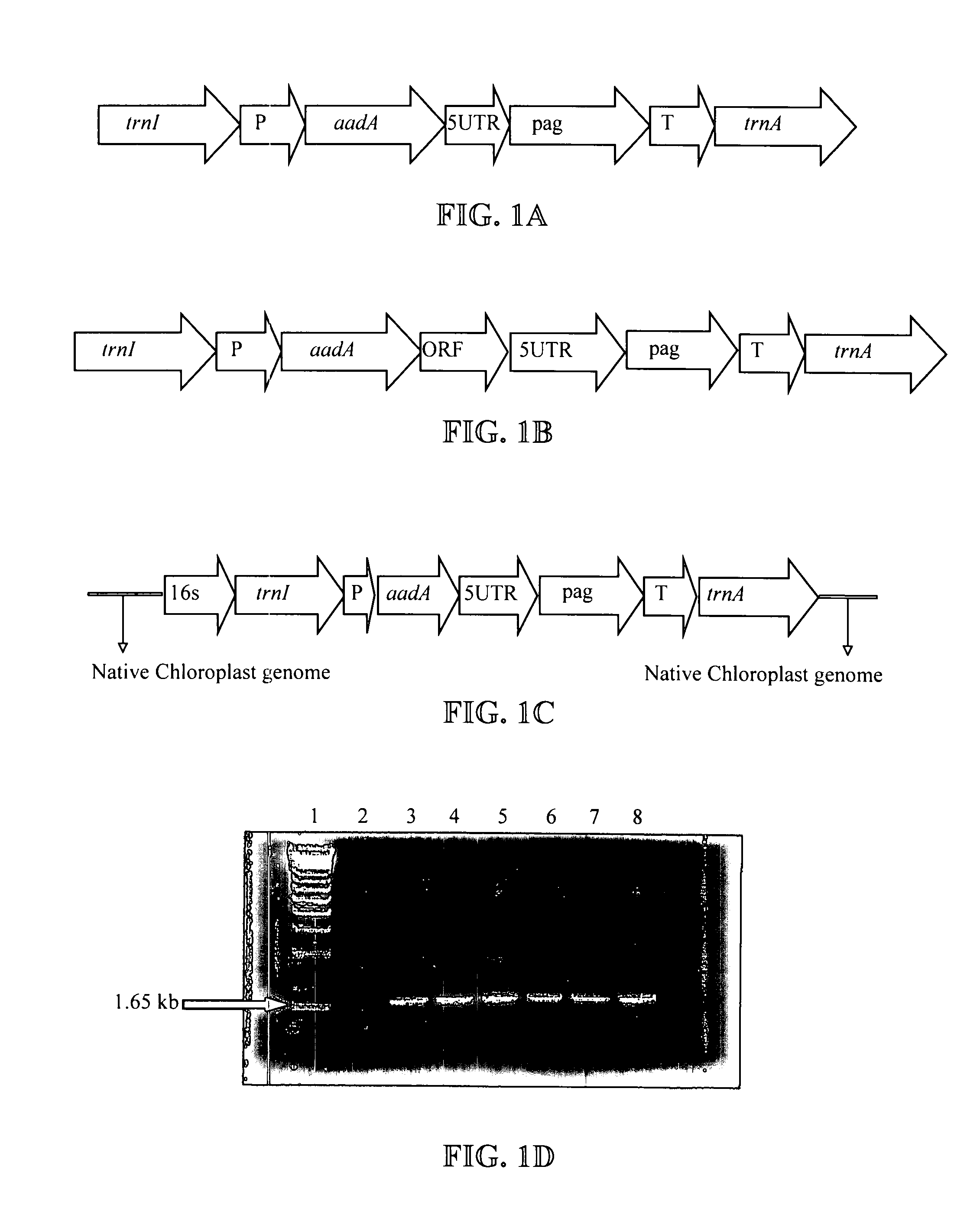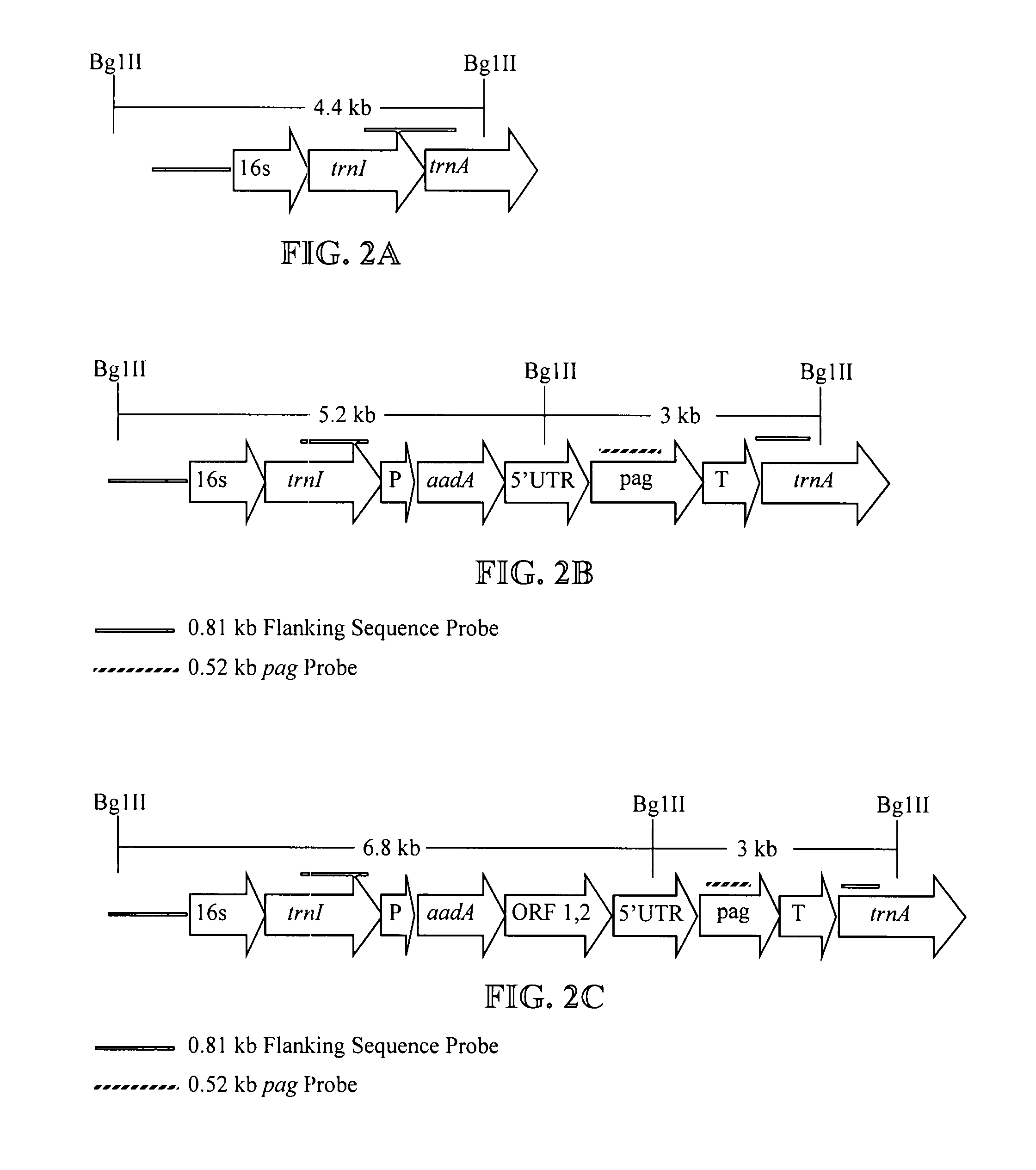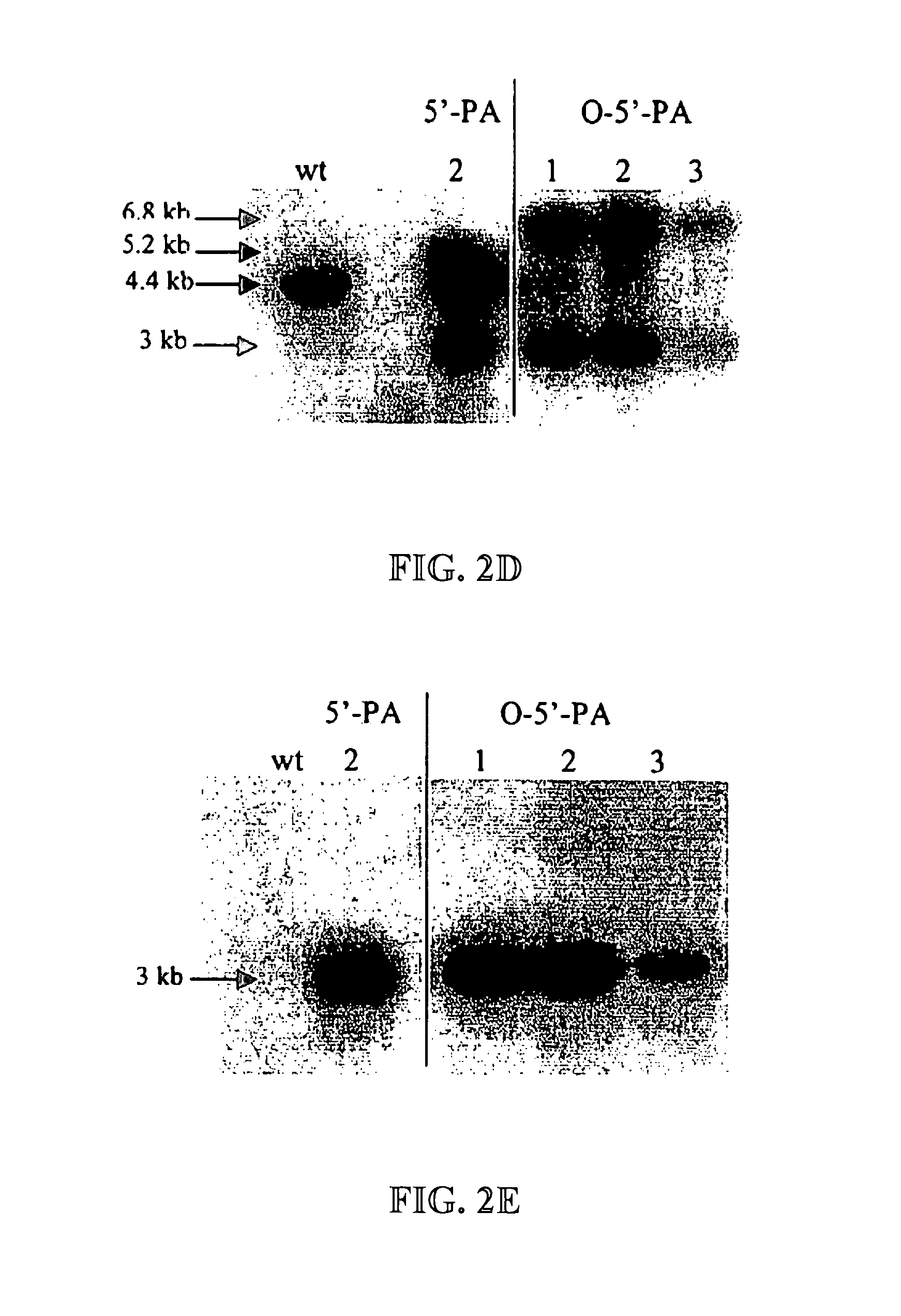Expression of protective antigens in transgenic chloroplasts
a technology of protective antigens and chloroplasts, applied in the field of transgenic chloroplasts, can solve the problems of particular challenge for vaccine developers, particularly devastating plague form, and immunization against aerosolization
- Summary
- Abstract
- Description
- Claims
- Application Information
AI Technical Summary
Benefits of technology
Problems solved by technology
Method used
Image
Examples
example 1
Experiment Protocol for Example 1
Bombardment and Selection of Transgenic Plants:
[0072]Sterile Nicotiana tabacum cv. Petit Havana tobacco leaves were bombarded using the Bio-Rad PDS-1000 / He biolistic device as previously described. The bombarded leaves were placed on RMOP medium containing 500 μg / ml spectinomycin for two rounds of selection on plates and subsequently moved to jars of MSO medium containing 500 μg / ml spectinomycin.
PCR Analysis to Test Stable Integration:
[0073]DNA was extracted from tobacco leaves using Qiagen DNeasy Plant Mini Kit available from Qiagen, Valencia, Calif. PCR was performed using the Perkin Elmer Gene Amp PCR System 2400 (available from Perkin Elmer, Chicago, Ill.). PCR reactions contained template DNA, 1×Taq buffer, 0.5 mM dNTPs, 0.2 mM 3P primer, 0.2 mM 3M primer, 0.05 units / μl Taq Polymerase, and 0.5 mM MgCl2. Samples were run for 30 cycles as follows: 95° C. for 1 min, 65° C. for 1 min, and 72° C. for 2 min with a 5 min ramp up at 95° C. and a 72° C. ...
example 2
Transformation of the Tomato Chloroplast Genome
[0078]Prior to the creation of the pTom-BADH2-G10-pag ˜8.8 kb vector construct (FIG. 7), the Applicant constructed the pLD Tom-BADH vector (FIG. 6A) illustrating the ability to transform the chloroplast genome of edible dicots. The Tom-BADH vector was constructed to with two selectable marker genes (BA and spectinomycin) to test ability of transformed plants to grow on BA as compared to spectinomycin. The pLD-Tom-BADH vector contains the chimeric aadA gene and the BADH gene driven by the constitutive 16 S rRNA promoter and regulated by the 3′UTR region of psbA gene from petunia plastid genome. In this construct both, aadA and BADH possess the chloroplast preferred ribosomal binding site, GGAGG. Another suitable vector used for tomato chloroplast transformation is the pLD-Tom-UTR-BADH vector, which has the constitutive 16 S rRNA promoter driving the expression of the dicistron, in which the BADH is under the regulation of the promoter an...
example 3
Transformation of Carrot to Produce Anthrax Vaccine
[0091]Carrot (Daucus carota L.) is a biennial plant grown for its edible taproot. It is one of the most important vegetables used worldwide for human consumption. Carrot taproots are rich in vitamin A and fiber and are ideal to genetically manipulate in the chromoplast for the production of edible vaccines. For transformation of carrot, flanking sequences (trnI and trnA) are amplified with the help of PCR. Duration for regeneration of carrot plantlets is shortened to four months from eight months when replacing the antibiotic selection with BA. The same chloroplast constructs as described above for tomatoes are used for carrot except that homologous recombination regions i.e. trnI and trnA are derived from carrot chloroplast DNA. The advantage of using carrot is that from small clusters of cells or a small piece of carrot one can get thousands of transgenic plants in a limited space. Moreover, single cells are directly in contact wi...
PUM
| Property | Measurement | Unit |
|---|---|---|
| size | aaaaa | aaaaa |
| length | aaaaa | aaaaa |
| length | aaaaa | aaaaa |
Abstract
Description
Claims
Application Information
 Login to View More
Login to View More - R&D
- Intellectual Property
- Life Sciences
- Materials
- Tech Scout
- Unparalleled Data Quality
- Higher Quality Content
- 60% Fewer Hallucinations
Browse by: Latest US Patents, China's latest patents, Technical Efficacy Thesaurus, Application Domain, Technology Topic, Popular Technical Reports.
© 2025 PatSnap. All rights reserved.Legal|Privacy policy|Modern Slavery Act Transparency Statement|Sitemap|About US| Contact US: help@patsnap.com



